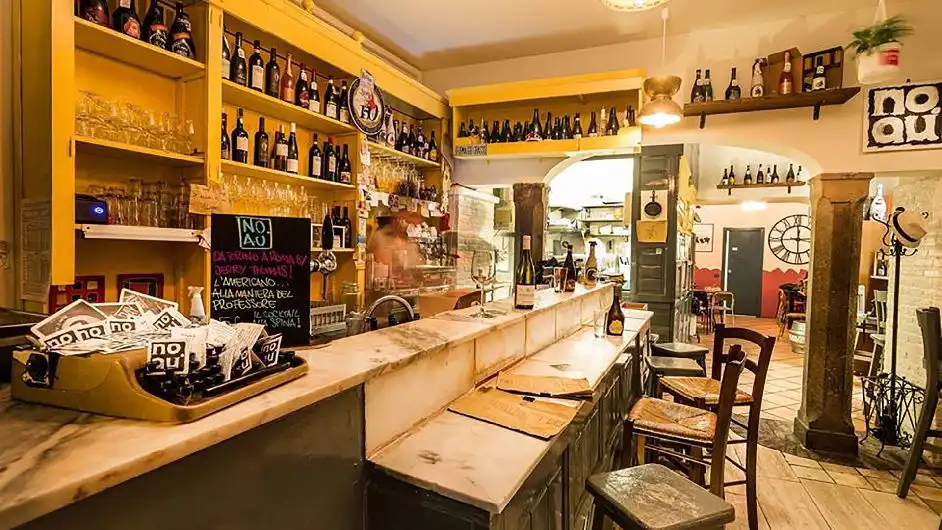1. Villa Medici: Live like Royalty
Learn more about one of the most powerful families in Italy at the Villa Medici. Full price tickets are 12 Euro and include a guided tour and access to the temporary exhibitions. The tour which is offered in English, Italian and French leads you through the gardens and lets you view the many antique statues dotted around the property as well as see the rooms that became inspiration for many famous works of art. These include the Bosco’s studio, depicted in a painting by Velasquez.
Top Tip: It is possible to actually stay in the Villa Medici itself, to book contact them through this address: standard@villamedici.it

2. Villa dei Quintili: Horrible History
Villa dei Quintili was built by the Quintili brothers in 151 CE and has been the site of much of Rome’s history, the emperor Commodus decided to make it his place of residence and rather bloodily took it from the brothers. Karma would later come back to haunt Commodus as he was later assassinated on these very grounds.
These days the small number of tourists that visit have access to the museum and the entire extent of the ruins. To get there take the Line A metro to Colli Albani and then the bus number 664.
Top Tip: There are two entrances to the ruins, the main one is on Appia Nuova, the other is on Appia Antica but check whether it is open on your day of visit as there are many stories of tourists having to walk all the way round to the other entrance.

3. Ostia Antica: Like Pompeii but better
Come face to face with characters from Greek and Roman Mythology in the museum at Ostia Antica. Statues of many of the gods and goddesses are on show as well as imperial portraits and mosaics. Additionally have a look around the stunning ruins, described as the better Pompeii, which include the ancient restaurant with the menu still frescoed on the wall. To get there it’s a half an hour hop on a commuter train.
Top Tip: The ruins of the theatre are still used in summer for plays so check that out if you are visiting then.

4. Palazzo Valentini: Virtual History
Once hidden beneath the Palazzo Valentini until they were discovered by archaeologists, the remains of ancient Roman houses are now on permanent display, adding to Romes already rich historical and artistic history. A team of art historians and architects worked with archaeologists on a project to research, restore these excavations and to then put them on public display. What is unique about this experience is that the ruins have been brought to life using modern technology- virtual reconstructions, graphics and video.
Top Tip: Although it will cost you 1.50 Euro more, it is recommended to reserve tickets in advance. tel. +39 06 32810

5. The Protestant Cemetery: The quieter St Peters
Looking for a less busy alternative to St Peter‘s? Visit the Protestant Cemetery in Testaccio and look out for the graves of Keats, Shelley and Gramsci. The cemetery is located just inside the Aurelian Wall on a gorgeous sloping site dotted with cypress and pine trees. Top Tip: Morbid though it sounds, look out for the statue entitled, The Angel of Grief. It was sculpted by William Wetmore Story for the grave of his wife and is thought to be the most beautiful in the cemetery.
6. Pizzeria Remo, Testaccio: Best Pizza in Rome
Whilst you are in this area, check out the Pizzeria Remo. On a corner overlooking a small park, Remo serves up good Roman-style flat pizzas, with all the classic toppings, to a lively set of customers, a good place to go if you like a bustling atmosphere. The tomato and basil bruschettas are also excellent.
Top Tip: The best tables are located outside, to secure one you must arrive early as they do not take bookings.
Location: Piazza Santa Maria Liberatrice 44, 00153

7. Caffe Greco: Coffee with History
Take a break from all the walking around museums and have a coffee and a cake in Rome’s oldest cafe, Caffe Greco. Located near to the Spanish steps, the cafe dates back to 1760. It has seen such patrons as Buffalo Bill and Goethe.
Top Tip: Ordering drinks at the bar is cheaper than having it sat down, so if it’s just a quick espresso you want this is probably your better option.
Location: Via dei Condotti, 86, 00187 Roma, Italy

8. Il Goccetto: The Wine of Choice
For many, this is the best wine bar in Rome, the only one to deliver on wine expertise, food (a range of gourmet cold deli platters) and a buzzy neighbourhood vibe. It has a fantastic by-the-glass selection, with around 50 bottles on the go at any one time and they rotate often enough to keep refreshingly new. The décor in the 15th-century building is all dark wood, subdued lighting, exposed ceiling beams and bottle-lined shelves: creating a perfect ambience. It‘s so well received that there‘s usually a spillover crowd in the street outside, even in winter.
Top Tip: Bring cash as it has been reported they aren‘t always happy to accept card

9. Bar Necci dal 1924: Local Favourite
Located in Pigneto, described as Rome’s SoHo, this now sixties themed diner is rarely visited by tourists. The food is based on fresh, seasonal ingredients such as the panicollo (skirt steak) served with Swiss chard and sweet-and-sour Tropea onions. The bar/restaurant is open from breakfast until the small hours, so pop in at your leisure.
Top Tip: Reservations are recommended for dinner, but not necessarily for other times.
Location: Via Fanfulla da Lodi 68, 00176

10. MACRO Museum of Contemporary Art: Forget Frescos
Most museums in Rome are dedicated to the city’s ancient past, which whilst enlightening can get quite frankly a bit old, if you’ll excuse the pun. Once a brewery, MACRO Niazzi is dedicated to street art, which can be viewed best from atop the museum‘s terrace.
Top Tip: Check the website before going to see which exhibits are showing, as with most museums there are periods where little is on show. Also whether you drive or not, have a look at the car park as you can see a Roman house that‘s been uncovered.

11. Bottega del Marmoraro: The perfect souvenier
It‘s not entirely clear at first whether Sandro Fiorentini‘s little cove in artsy Via Margutta is a shop, a workshop, or simply a collectors stash. It‘s all three: set up by Sandro‘s father Enrico, this Aladdin‘s cave of wonders is focussed on working marble in all its aspects although nowadays restorating and sourcing antique materials, carvings and sculptures is Fiorentini‘s main business.
Top Tip: If you‘re just looking for an original souvenir, ask about the nice line of small marble plaques he does with humorous mottoes in the Roman dialect.



























